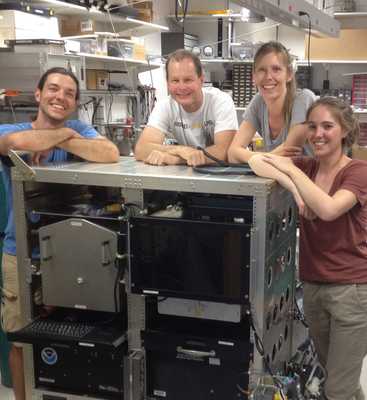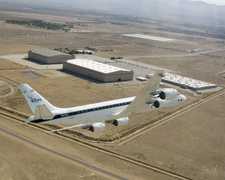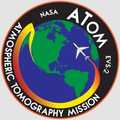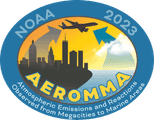The Aerosol Microphysical Properties (AMP) is an in situ airborne instrument suite operated by NOAA. It includes instruments such as the Nucleation-Mode Aerosol Size Spectrometer (NMASS), Ultra-High Sensitivity Aerosol Spectrometer (UHSAS), Laser Aerosol Spectrometer (LAS), and Coarse-Mode Aerosol Size Spectrometer (CMASS). AMP provides measurements of aerosol particle size distribution, as well as particle number, size, and volume concentration. It can measure aerosols within a size range of 3 to 40,000 nm and offers measurements at 1 Hz resolution.


Instrument Details
- Spectrometer/Radiometer
- Earth Science > Atmosphere > Aerosols > Aerosol Particle PropertiesEarth Science > Atmosphere > Aerosols > Cloud Condensation NucleiEarth Science > Atmosphere > Aerosols
- Troposphere
- 1 Hz
- Point
- N/A
- Currently unavailble
Charles Brock
Charles Brock
Droplet Measurement Technologies, TSI Inc
Currently unavailable
Currently unavailable
 NASA WB-57 17 Campaigns · 83 Instruments |  Stratospheric Aerosol processes, Budget, and Radiative Effects 2022—2027 Houston, Texas, Fairbanks, Alaska Ongoing 3 Deployments · 0 Data Products
| ||||||||||||||||||||||||||||||||||||||||||||||||||||||
 Douglas DC-8 44 Campaigns · 180 Instruments |  Atmospheric Tomography Mission 2016—2018 Western Arctic, South Pacific, Atlantic Ocean, Greenland, Central North America 4 Deployments · 56 Data Products
 Student Airborne Research Program 2009—2026 Southern California, Virginia Ongoing 19 Deployments · 25 Data Products
 Atmospheric Emissions and Reactions Observed from Megacities to Marine Areas 2023 Urban regions across the western and eastern United States 1 Deployment · 0 Data Products
|
Filter data products from this instrument by specific campaigns, platforms, or formats.